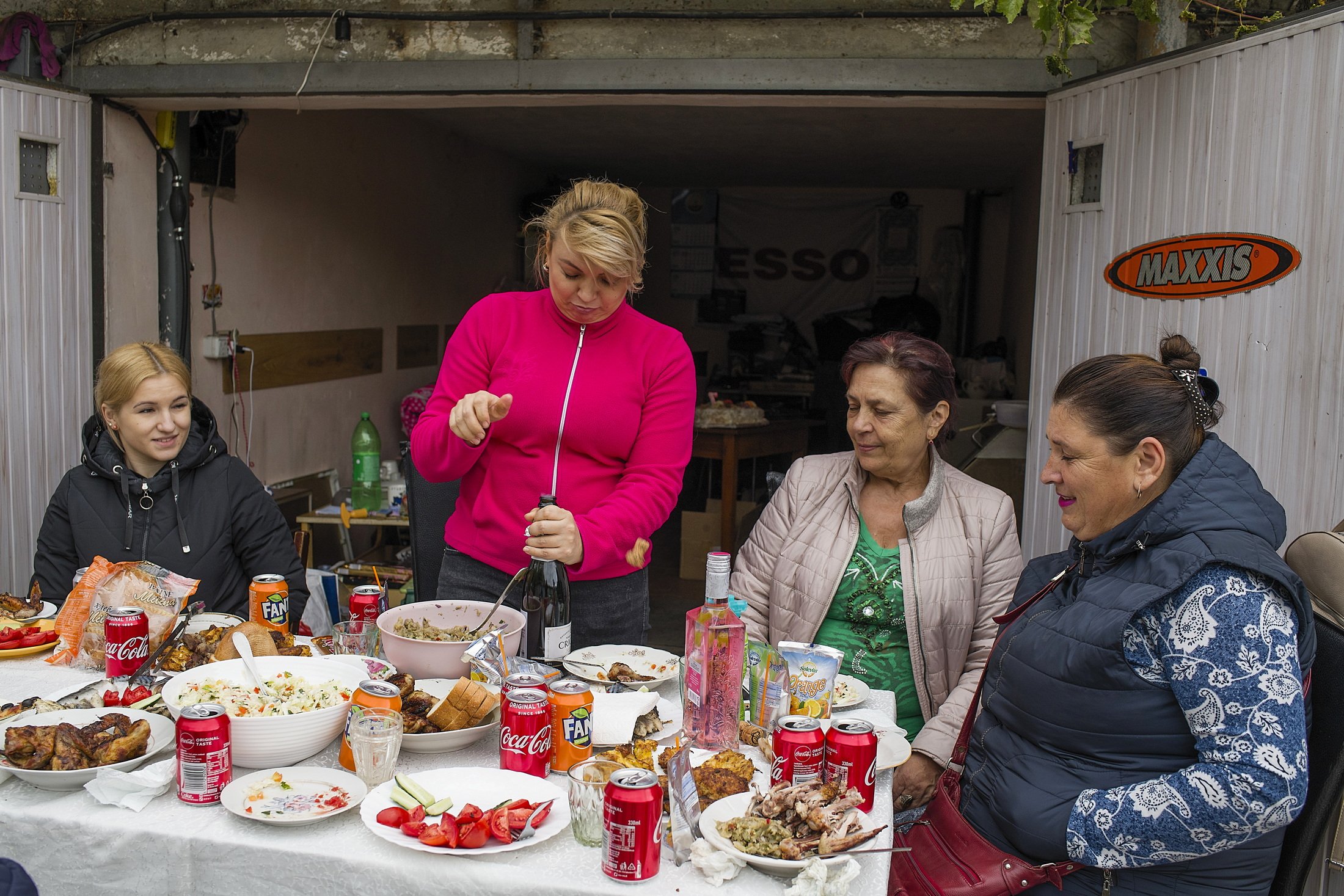
GARAGE DAYS
-
Built next to socialist blocks and in light-industrial zones in cities, these garages - in clusters of dozens, hundreds, and occasionally thousands of units, many built illegally after the end of communism - soon outgrew their original function and morphed into individualized tableaus of their owners’ particular interests, hobbies and passions.
Today, few are used to store vehicles. Now, these simple structures serve as kitchens for pickling cucumbers, storerooms for seasonal items, wineries using grapes grown on the roofs, or cozy venues for family gatherings and neighborhood parties. Even the mayor of Chișinău, Moldova's capital, was photographed drinking in a garage and playing improvised instruments. In another garage, two kilograms of uranium were found. The limits of a garage's uses are as broad and varied as the owner's imagination - an art gallery? A store for fresh fish? A museum for obsolete computers, with over 100 rare and unusual exhibits?Garages give the freedom to do anything one cannot do at home or in public. Privately owned or rented, they are often in isolated locations where noise and commotion doesn't bother neighbors. Enterprising owners have built second floors onto their single-story structures and kitted them out with saunas and other aspects of a comfortable little holiday home. Being of low real estate value and often built at a sufficient distance from housing units, local authorities generally turn a blind eye to these irregular constructions, allowing owners to make the most of the extra space they might lack at home.
Today, garages are disappearing in towns where gentrification has made the land they're built on valuable to developers. Especially in Romania, these idiosyncratic ecosystems will soon start to vanish. But for now, in many corners of towns across Romania and Moldova, people continue to use their imagination to turn the humble garage - these simple concrete cube - into expressions of their dreams.2018 - 2020 Moldova Republic
























